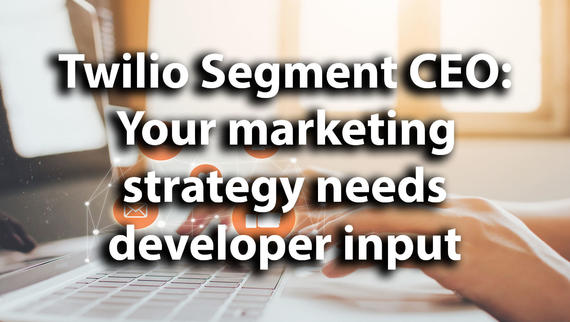Customer engagement in the digital era requires more than just a contact center — that’s why cloud communications company Twilio paid $3.2 billion for the customer data platform (CDP) Segment. With Segment, Twilio is offering a full set of customizable customer engagement tools. It plans to take on traditional contact center vendors like Cisco and Avaya with a platform that empowers developers to play a strategic role in customer engagement.
Twilio Segment CEO Peter Reinhardt spoke with ZDNet about his company’s developer-first approach and why it should resonate with enterprise customers in competitive sectors.
“The fundamental thesis of it, I think, is if you are trying to build a really competitive, new way of engaging customers, how you do that when you just pull something off the shelf is not clear,” Reinhardt said. “And so I think if you’re a bank, or a packaged goods company, or any company that is in a competitive space, if you’re not building something unique, then why is the customer going to preferentially engage with you? That, at its root, is why the developer-first approach is so compelling for the companies that are really going to succeed, over the next few decades.”
Watch the video above for the full conversation. Below are some highlights:
What is a Customer Data Platform? Why does Twilio need one?
Reinhardt: A customer data platform is basically the essential data infrastructure for any digital customer-first business. Typically, a CDP is sort of the key component of customer engagement. Think about empowering businesses with good data to help them make real-time decisions — in terms of how they engage with those customers, how to market to them, how to support them, etc.
We help companies collect customer data across all the different touch points and then organize and orchestrate that, so that they can make use of it in all their downstream customer communications.
The combination of Segment and Twilio superpowers here is data and communications… Giving our customers the ability to provide those true, personalized, end-to-end customer engagement across any channel anytime anywhere.
… Companies and developers are sort of broadly begging for a way to better engage their customers across the multitude of channels that have kind of exploded over the past decade. A few decades ago, you went into the store and maybe you made a phone call. Now you’ve got SMS, push, email, call center and all these different channels, not to mention mobile and web and so on. How do you manage customer engagement, customer experience across all those different things? So having a single data platform for the marketer to live on top of, I think, is really important.
Twilio Segment’s current priorities:
Reinhardt: Segment’s operating as an independent business unit. We’re a division within Twilio, so i’m still CEO of Segment Twilio, and I have my leadership team.
At a high level, we see this as a once-in-a generation opportunity to provide companies with the full ability to bring the data and the communication channels together and to engage with customers. Early progress here would be like Twilio Event Stream, where you can get all of your customer touch point data about the communications that you’ve got and flow that out to places like Segment.
So really excited about what that means, in terms of actually having all that data in one place, where you can then personalize all that marketing downstream, with all of your existing tools.
Going up against big SaaS vendors:
Reinhardt: The current market is dominated by these SaaS providers that have these big, monolithic one-size-fits-all systems, and I think it’s actually really bad for any business that wants to differentiate itself with different customer experiences.
So both Twilio and Segment kind of break from that SaaS pack with the developer-first approach, where we really start with the infrastructure and encourage folks to build on top of that. So we’re all about building the sort of flexible building blocks that people can build these really unique customer experiences on top of.
It all comes back to the developer:
Reinhardt: If you really look at what it takes to collect first-party data, what does it take to build on top of it, that all comes back to the developer. So while you… certainly have a marketer… it’s becoming increasingly clear that you really actually need your developers engaged internally in a decision-making process around what your customer data platform is… Data is fundamentally the thing that drives all of these campaigns.
The four C’s of customer data:
Reinhardt’s 4 C’s are: clean, correct, complete, compliant. (Bonus: consented)
Reinhardt: I’d say most people understand the importance of compliance and consented data but tend to fall down around completeness and correctness. It’s much harder, and that’s really where the developer has to get involved because you’re trying to get behavioral data, out of a mobile app or off the website, so that you can send people things that are actually relevant to them.
